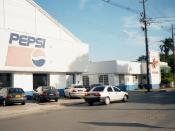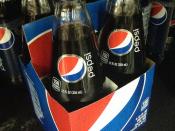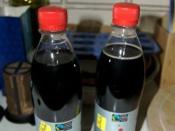Question 1
The concentration producing industry has one buyer and through its value chain. Instead, costs for advertising, promotion, market research, and bottler relations were significant. On the other hand, bottling industry is the mid-way player in the soft drink industry. There are two suppliers and one buyer involved in its value chain (Exhibit 1).
Whether two industries are profitable depends on soft drink consumption, which had increased for more than 20 years and plateaued in the 1990s.
The economics of the CP and bottling is very different from each other in terms of number and size of rivals, and the scope of competitive rivalry. There are two giants competing head to head on the CP industry, smaller national producers, such as Seven-Up and Dr Pepper, are relatively trivial. There are a lot of players of same size in the bottling industry. Unlike the furious competition between Pepsi and Coke, no sense of competition can be felt in bottling industry.
Reasons are that, first, Pepsi and Coke control the majority of bottlers in 1990s; second, intrabrand competition is restricted by the franchise agreement, which is protected by 'Soft Drink Interbrand Competition Act'.
From the view of capital requirement, it is easier for others to enter the CP industry than to enter the bottling industry, since comparing to $30-$50 million dollars requirement to establish a bottling plant covering only one 80th of ability to serve the entire US market, the requirement for one CP plant with a nation-wide capacity is only $5-$10 million dollars. In addition, brand loyalty is low in the CP industry since consumers are sensitive to price and there is little switching cost. There are many substitutes for soft drinks, such as tea, beer, and milk. There is no substitutes existing in the bottling industry, and no customer...


